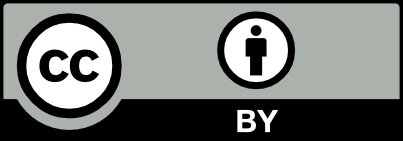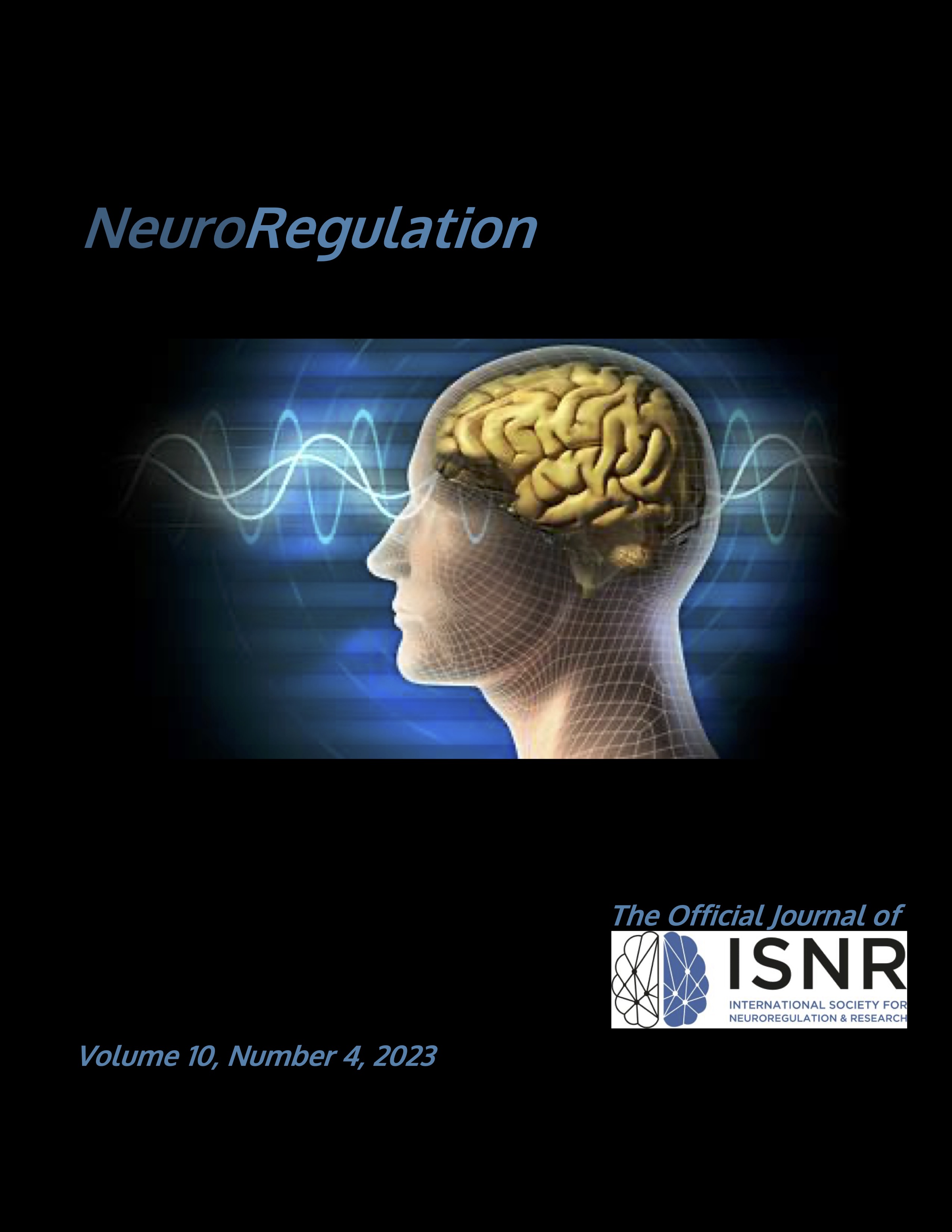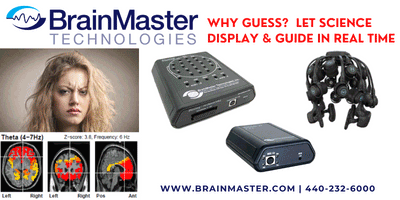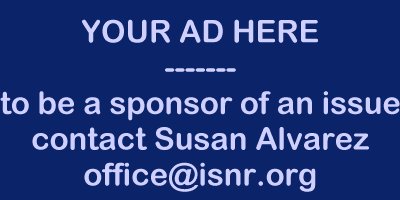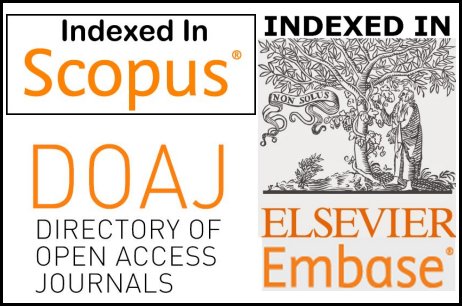Proceedings of the 2023 ISNR Annual Conference: Poster Presentations
DOI:
https://doi.org/10.15540/nr.10.4.271Keywords:
neurofeedback, eeg, qeeg, conference abstracts, ISNR Annual ConferenceAbstract
Selected Abstracts of Conference Poster Presentations at the 2023 International Society for Neuroregulation and Research (ISNR) 31st Annual Conference, Dallas, Texas, USA.
References
References for Proceedings of the 2023 ISNR Annual Conference: Poster Presentations
---Heart Rate Variability Biofeedback (HRV-BFB) for Reducing Special Education Teachers’ Work-Related Stress
Chung, A. H., Gevirtz, R. N., Gharbo, R. S., Thiam, M. A., & Ginsberg, J. P. (2021). Pilot study on reducing symptoms of anxiety with a heart rate variability biofeedback wearable and remote stress management coach. Applied Psychophysiology and Biofeedback 46, 347–358. https://doi.org/10.1007/s10484-021-09519-x
Cormier, C. J., McGrew, J., Ruble, L., & Fischer, M. (2022). Socially distanced teaching: The mental health impact of the COVID-19 pandemic on special education teachers. Journal of Community Psychology, 50(3), 1768–1772. https://doi.org/10.1002/jcop.22736
Dewey J., Sindelar P. T., Bettini E., Boe E. E., Rosenberg M. S., & Leko C. (2017). Explaining the decline in special education teacher employment from 2005 to 2010. Exceptional Children, 83(3), 315–329. https://doi.org/10.1177/0014402916684620
Haydon, T., Leko, M. M., & Stevens, D. (2018). Teacher stress: Sources, effects, and protective factors. Journal of Special Education Leadership, 31(2).
Hester, O. R., Bridges, S. A., & Rollins, L. H. (2020). ‘Overworked and underappreciated’: Special education teachers describe stress and attrition. Teacher Development, 24(3), 348–365. https://doi.org/10.1080/13664530.2020.1767189
Individuals with Disabilities Education Improvement Act of 2004, Public Law 446, U.S. Statutes at Large 118 (2004): 2647–2808
Lehrer, P. M., & Gevirtz, R. (2014). Heart rate variability biofeedback: How and why does it work? Frontiers in Psychology, 5, 756. https://doi.org/10.3389/fpsyg.2014.00756
---Data-Driven Neurofeedback Enhances Spatial Cognition in Healthy Adults
Alkoby, O., Abu-Rmileh, A., Shriki, O., & Todder, D. (2018). Can we predict who will respond to neurofeedback? A review of the inefficacy problem and existing predictors for successful EEG neurofeedback learning. Neuroscience, 378, 155–164. https://doi.org/10.1016/j.neuroscience.2016.12.050
Bowie, C. R., & Harvey, P. D. (2006). Administration and interpretation of the trail making test. Nature Protocols, 1(5), 2277–2281. https://doi.org/10.1038/nprot.2006.390
Dähne, S., Meinecke, F. C., Haufe, S., Höhne, J., Tangermann, M., Müller, K.-R., & Nikulin, V. V. (2014). SPoC: A novel framework for relating the amplitude of neuronal oscillations to behaviorally relevant parameters. NeuroImage, 86, 111–122. https://doi.org/10.1016/j.neuroimage.2013.07.079
Ganis, G., & Kievit, R. (2015). A new set of three-dimensional shapes for investigating mental rotation processes: Validation data and stimulus set. Journal of Open Psychology Data, 3(1), e3. https://doi.org/10.5334/jopd.ai
Gruzelier, J. H. (2014a). EEG-neurofeedback for optimising performance. I: A review of cognitive and affective outcome in healthy participants. Neuroscience & Biobehavioral Reviews, 44, 124–141. https://doi.org/10.1016/j.neubiorev.2013.09.015
Gruzelier, J. H. (2014b). EEG-neurofeedback for optimising performance. III: A review of methodological and theoretical considerations. Neuroscience & Biobehavioral Reviews, 44, 159–182. https://doi.org/10.1016/j.neubiorev.2014.03.015
Porter, A., Nielsen, A., Dorn, M., Dworetsky, A., Edmonds, D., & Gratton, C. (2023). Masked features of task states found in individual brain networks. Cerebral Cortex, 33(6), 2879–2900. https://doi.org/10.1093/cercor/bhac247
---Proficiency Modulates Effects of Embodiment Learning on Word Learning in Typical and Dyslexic Readers: Evidence From Event Related Potentials
Aravena, S., Tijms, J., Snellings, P., & van der Molen, M. W. (2017). Predicting individual differences in reading and spelling skill with artificial script–based letter–speech sound training. Journal of Learning Disabilities, 51, 552–564. https://doi.org/10.1177/0022219417715407
Chen, H.-C., & Shu, H. (2001). Lexical activation during the recognition of Chinese characters: Evidence against early phonological activation. Psychonomic Bulletin & Review, 8, 511–518. https://doi.org/10.3758/BF03196186
Ehri, L. C. (2014). Orthographic mapping in the acquisition of sight word reading, spelling memory, and vocabulary learning. Scientific Studies of Reading, 18(1), 5–21. https://doi.org/10.1080/10888438.2013.819356
Guan, C. Q., Liu, Y., Chan, D. H. L., Ye, F., & Perfetti, C. A. (2011). Writing strengthens orthography and alphabetic-coding strengthens phonology in learning to read Chinese. Journal of Educational Psychology, 103(3), 509–522. https://doi.org/10.1037/a0023730
Hillyard, S. A., Vogel, E.K., & Luck, S.J. (1998). Sensory gain control (amplification) as a mechanism of selective attention: Electrophysiological and neuroimaging evidence. Philosophical Transactions of the Royal Society B Biological Sciences, 353, 1257–1270. https://doi.org/10.1098/rstb.1998.0281
Liu, Y., & Perfetti, C. A. (2003). The time course of brain activity in reading English and Chinese: An ERP study of Chinese bilinguals. Human Brain Mapping, 18, 167–175. https://doi.org/10.1002/hbm.10090
Pylkkänen, L., & Marantz, A. (2003). Tracking the time course of word recognition with MEG. Trends in Cognitive Sciences, 7(5), 187–189. https://doi.org/10.1016/S1364-6613(03)00092-5
Woodman, G. F. (2010). A brief introduction to the use of event-related potentials in studies of perception and attention. Attention, Perception, & Psychophysics, 72, 2031–2046. https://doi.org/10.3758/BF03196680
Yum, Y., & Law, S. (2021). N170 reflects visual familiarity and automatic sublexical phonological access in L2 written word processing. Bilingualism: Language and Cognition, 24(4), 670–680. https://doi.org/10.1017/S1366728920000759
Zhao, J., Li, S., Lin, S. E., Cao, X. H., He, S., & Weng, X. C. (2012). Selectivity of N170 in the left hemisphere as an electrophysiological marker for expertise in reading Chinese. Neuroscience Bulletin, 28, 577–584. https://doi.org/10.1007/s12264-012-1274-y
Adolescents With Complex Childhood Trauma From Residential Homes in Romania: Searching for Neuromarkers and Neurofeedback Protocol
Gapen, M., van der Kolk, B. A., Hamlin, E., Hirshberg, L., Suvak, M., & Spinazzola, J. (2016). A pilot study of neurofeedback for chronic PTSD. Applied Psychophysiology and Biofeedback, 41(3), 251–261. https://doi.org/10.1007/s10484-015-9326-5
Hong, J., & Park, J.-H. (2022). Efficacy of neuro-feedback training for ptsd symptoms: A systematic review and meta-analysis. International Journal of Environmental Research and Public Health, 19(20), 13096. https://doi.org/10.3390/ijerph192013096
Rogel, A., Loomis, A. M., Hamlin, E., Hodgdon, H., Spinazzola, J., & van der Kolk, B. (2020). The impact of neurofeedback training on children with developmental trauma: A randomized controlled study. Psychological Trauma: Theory, Research, Practice, and Policy, 12(8), 918–929. https://doi.org/10.1037/tra0000648
van der Kolk, B. A., Hodgdon, H., Gapen, M., Musicaro, R., Suvak, M. K., Hamlin, E., & Spinazzola, J. (2016). A randomized controlled study of neurofeedback for chronic PTSD. PLoS ONE, 11(12), Article e0166752. https://doi.org/10.1371/journal.pone.0166752
---Development of Student Neurofeedback Learning Competencies for Counseling Programs
Beeson, E. T., & Aideyan, B. (2016). The research domain criteria initiative: Implication for neurocounseling. Counseling Today, 59(5), 18–21.
Beeson, E. T., & Field, T. A. (2017). Neurocounseling: A new section of the journal of mental health counseling. Journal of Mental Health Counseling, 39(1), 71–83. https://doi.org/10.17744/mehc.39.1.06
Chapin, T. J. (2016). Developing a specialty in neurofeedback: Decision points. Journal of Mental Health Counseling, 38(2), 155–169. https://doi.org/10.17744/mehc.38.2.06
Council for Accreditation of Counseling and Related Educational Programs. (2015). 2016 CACREP standards. https://www.cacrep.org
Crockett, G., Gill, D. L., Cashwell, T. H., & Myers, J. E. (2017). Integrating non-technological and technological peripheral biofeedback in counseling. Journal of Mental Health Counseling, 39(2), 163–179. https://doi.org/10.17744/mehc.39.2.06
Duenyas, D. L., & Luke, C. (2019). Neuroscience for counselors: Recommendations for developing and teaching a graduate course.The Professional Counselor, 9(4), 369–380. https://doi.org/10.1037/a0023730
Demos, J. N. (2019). Getting started with EEG neurofeedback. (2nd ed.). W. W. Norton & Company.
Gregory, J. C., Romero, D. E., & Jones, M. S. (2020). Predictors of neurofeedback outcomes following qEEG individualized protocols for anxiety. NeuroRegulation, 7(1), 18–25. https://doi.org/10.15540/nr.7.1.18
Hammond, C. H. (2005). Neurofeedback treatment of depression and anxiety. Journal of Adult Development, 12(2–3), 131–137. https://doi.org/10.1007/s10804-005-7029-5
Ivey, A. E., Ivey, M. B., & Zalaquett, C. (2018). Intentional interviewing and counseling: Facilitating client development in a multicultural society (9th ed.). Cengage Learning.
Myers, J. E., & Young, J. S. (2012). Brain wave biofeedback: Benefits of integrating neurofeedback in counseling. Journal of Counseling and Development, 90(1), 20–28. https://doi.org/10.1111/j.1556-6676.2012.00003.x
van der Kolk, B. A., Hodgdon, H., Gapen, M., Musicaro, R., Suvak, M. K., Hamlin, E., & Spinazzola, J. (2016). A randomized controlled study of neurofeedback for chronic PTSD. PLoS ONE, 11(12), Article e0166752. https://doi.org/10.1371/journal.pone.0166752
---Dynamics of Diffusion Indicators of the Brain White Matter Tractography After a Course of the Brain Secondary Motor Cortical Zones fMRI Neurofeedback in Stroke Patients
Bezmaternykh, D. D., Kalgin, K. V., Maximova, P. E., Mel'nikov, M. Y., Petrovskii, E. D., Predtechenskaya, E. V., Savelov, A. A., Semenikhina, A. A., Tsaplina, T. N., Shtark, M. B., & Shurunova, A. V. (2021). Application of fMRI and simultaneous fMRI-EEG neurofeedback in post-stroke motor rehabilitation. Bulletin of Experimental Biology and Medicine, 171(3), 379–383. https://doi.org/10.1007/s10517-021-05232-1
Khruscheva, N. A., Mel’nikov, M. Y., Bezmaternykh, D. D., Savelov, A. A., Kalgin, K. V., Petrovsky, Y. D., Shurunova, A. V., Shtark, M. B., & Sokhadze, E. M. (2022). Interactive brain stimulation neurotherapy based on BOLD signal in stroke rehabilitation. NeuroRegulation, 9(3), 147–163. https://doi.org/10.15540/nr.9.3.147
Lioi, G., Butet, S., Fleury, M., Bannier, E., Lécuyer, A., Bonan, I., & Barillot, C. (2020). A multi-target motor imagery training using bimodal EEG-fMRI neurofeedback: A pilot study in chronic stroke patients. Frontiers in Human Neuroscience, 14, Article 37. https://doi.org/10.3389/fnhum.2020.00037
Lioi, G., Fleury, M., Butet, S., Lécuyer, A., Barillot, C., & Bonan, I. (2018). Bimodal EEG-fMRI neurofeedback for stroke rehabilitation: A case report. Annals of Physical and Rehabilitation Medicine, 61(Suppl.), e482–e483. https://doi.org/10.1016/j.rehab.2018.05.1127
Rudnev, V., Melnikov, M., Savelov, A., Shtark, M., & Sokhadze, E. (2021). fMRI-EEGfingerprint regression model for motor cortex. NeuroRegulation, 8(3), 162–172. https://doi.org/10.15540/nr.8.3.162
Savelov, A. A., Shtark, M. B., Kozlova, L. I., Verevkin, E. G., Petrovskii, E. D., Pokrovskii, M. A., Rudych, P. D., & Tsyrkin, G. M. (2019). Dynamics of interactions between cerebral networks derived from fMRI data and motor rehabilitation during stokes. Bulletin of Experimental Biology and Medicine, 166(3), 399–403. https://doi.org/10.1007/s10517-019-04359-6
---Loreta Neurofeedback for Brain and Behavioral Dysregulation in a Stroke Patient: A Case Study
Braverman, E. R., & Blum, K. (2003). P300 (latency) event-related potential: An accurate predictor of memory impairment. Clinical EEG and Neuroscience, 34(3), 124–139. https://doi.org/10.1177/155005940303400306
Foster, D. S., & Thatcher, R. W. (2014). Chapter 4- surface and loreta neurofeedback in the treatment of post-traumatic stress disorder and mild traumatic brain injury. Z Score Neurofeedback: Clinical Applications, 59–92. https://doi.org/10.1016/B978-0-12-801291-8.00004-2
Koberda, L. (2014). LORETA z-score neurofeedback in chronic pain and headaches. Z Score Neurofeedback: Clinical Applications, 115–139. https://doi.org/10.1016/B978-0-12-801291-8.00006-6
Koberda, L. (2014). Z-score LORETA neurofeedback as a potential therapy in depression/anxiety and cognitive dysfunction. Z Score Neurofeedback: Clinical Applications, 93–113. https://doi.org/10.1016/B978-0-12-801291-8.00005-4
Koberda, L. (2015). Z-Score LORETA neurofeedback as a potential therapy in cognitive dysfunction and dementia. Journal of Psychology Clinical Psychiatry, 1(6), 00037. https://doi.org/10.15406/jpcpy.2014.01.00037
Koberda, L., & Frey. L. (2015). Z-score LORETA neurofeedback as a potential therapy for patients with seizures and refractory epilepsy. Journal of Neurology and Neurobiology, 1(1), 1–2. https://doi.org/10.16966/2379-7150.101
Koberda, L., & Stodolska-Koberda, U. (2014). Z-score LORETA neurofeedback as a potential rehabilitation modality in patients with CVA. Journal Neurology and Stroke, 1(5), 1–5.
Koberda, L., Koberda, P., Bienkiewicz, A.A., Moses, A., & Koberda, L. (2013) Pain Management using 19-electrode z-score LORETA neurofeedback. Journal of Neurotherapy, 17(3), 179–190. https://doi.org/10.1080/10874208.2013.813204
Reichert, J. L., Kober, S. E., Schweiger, D., Grieshofer, P., Neuper, C., & Wood, G. (2016) Shutting down sensorimotor interferences after stroke: A proof-of-principle SMR neurofeedback study. Frontiers in Human Neuroscience, 10, 348. https://doi.org/10.3389/fnhum.2016.00348
---Language, Emotion, and Cognitive Congruence: Does Appropriated Racism Detoxify the N-Words for African American Males Using Neurophysiological Measures?
Burrell, T. (2010). Brainwashed: Challenging the myth of black inferiority. New York, NY: SmileyBooks.
Chanel, G., Kierkels, J. J. M., Soleymani, M., & Pun, T. (2009). Short-term emotion assessment in a recall paradigm. International Journal of Human-Computer Studies, 67(8), 607–627.
Durkheim, E. (1982). (W.D. Halls, Trans). The rules of sociological method. S. Lukes (Ed.). New York, NY: The Free Press.
Evans, A. C. Jr., Levin, S., & McClain, A. (2020, August 18). Mental-Health leaders: We must end pandemic of racism [Press release]. American Psychological Association. https://www.apa.org/news/press/op-eds/end-pandemic-racism
Freire, P. (2000). Pedagogy of the oppressed (30th anniversary edition). New York, NY: Bloomsbury.
Jarymowicz, M. T., & Imbir, K. K. (2014). Toward a human emotions taxonomy (based on their automatic vs. reflective origin). Emotion Review, 7(2), 183–188. https://doi.org/10.1177/1754073914555923
Lipsky, S. (1977). Internalized oppression. Black Re-Emergence, 2, 5–10.
Liu, Y., Sourina, O., & Nguyen, M. K. (2010, October). Real-time EEG-based human emotion recognition and visualization. In 2010 International Conference on Cyberworlds (pp. 262–269). IEEE.
Massey, D. S. (2004). Segregation and stratification: A biosocial perspective. Du Bois Review: Social Science Research on Race, 1(1), 7–25. https://doi.org/10.1017/S1742058X04040032
Memmi, A. (1965). The colonizer and the colonized. Boston, MA: Beacon Press.
---Attention-Deficit Disorder: A Path to Diagnosis
Amen, D. G., & Carmichael, B. D. (1997). High-resolution brain SPECT imaging in ADHD. The Annals of Clinical Psychiatry; 9(2), 81–86. https://doi.org/10.1023/A:1026201218296
Amen, D. G, Hanks, C., & Prunella, J. (2008). Preliminary evidence differentiating ADHD using brain SPECT imaging in older patients. Journal of Psychoactive Drugs, 40(2), 139–146. https://doi.org/10.1080/02791072.2008.10400623
Agnew-Blais, J. C., Polanczyk, G. V., Danese, A., Wertz, J., Moffitt, T. E., & Arseneault, L. (2016). Evaluation of the persistence, remission, and emergence of attention-deficit/hyperactivity disorder in young adulthood. JAMA Psychiatry, 73(7), 713–720. https://doi.org/10.1001/jamapsychiatry.2016.0465
American Psychiatric Association. (2013). Diagnostic and statistical manual of mental disorders (5th ed.). https://doi.org/10.1176/appi.books.9780890425596 [In text citation = Diagnostic and Statistical Manual of Mental Disorders, (5th ed.; DSM-5; American Psychiatric Association [APA], 2013)]
Cabaleiro, P., Cueli, M., Cañamero, L. M., González-Castro, P. (2021). A case study in attention-deficit/hyperactivity disorder: An innovative neurofeedback-based approach. International Journal of Environmental Research and Public Health, 19(1), 191. https://doi.org/10.3390/ijerph19010191
Chen, Y., Su, S., Dai, Y., Wen, Z., Qian, L., Zhang, H., Liu, M., Fan, M., Chu, J., & Yang, Z. (2021). Brain volumetric measurements in children with attention deficit hyperactivity disorder: A comparative study between synthetic and conventional magnetic resonance imaging. Frontiers in Neuroscience, 15, 711528. https://doi.org/10.3389/fnins.2021.711528
Cortese S, Coghill D (2018) Twenty years of research on attention-deficit/hyperactivity disorder (ADHD): looking back, looking forward. Evidenced Based Mental Health 21(4):173–176. https://doi.org/10.1136/ebmental-2018-300050
Cortese, S., Kelly, C., Chabernaud, C., Proal, E., DiMartino, A., Milham, M., & Castellanos, F. (2012). Toward systems neuroscience of ADHD: A meta-analysis of 55 fMRI studies. The American Journal Psychiatry, 169(10), 1038–1055. https://doi.org/10.1176/appi.ajp.2012.11101521
Dalsgaard, S., Østergaard, S. D., Leckman, J. F., Mortensen, P. B., & Pedersen, M. G. (2015). Mortality in children, adolescents, and adults with attention deficit hyperactivity disorder: A nationwide cohort study. Lancet, 385(9983), 2190–2196. https://doi.org/10.1016/S0140-6736(14)61684-6
Davidson, M. A. (2008). ADHD in adults: A review of the literature. Journal of Attention Disorders, 11(6), 628–641. https://doi.org/10.1177/1087054707310878
---Brain Shifts Through the Triangle of Neurology
Kumar, S. S. (2016). Vestibular stimulation for stress management in students. Journal Of Clinical and Diagnostic Research, 10(2), CC27–CC31. https://doi.org/10.7860/jcdr/2016/17607.7299
Oh, S.-Y., Boegle, R., Ertl, M., Stephan, T., & Dieterich, M. (2018). Multisensory vestibular, vestibular-auditory, and auditory network effects revealed by parametric sound pressure stimulation. NeuroImage, 176, 354–363. https://doi.org/10.1016/j.neuroimage.2018.04.057
Pasquier, F., Denise, P., Gauthier, A., Bessot, N., & Quarck, G. (2019). Corrigendum: Impact of galvanic vestibular stimulation on anxiety level in young adults. Frontiers in Systems Neuroscience, 13, 57. https://doi.org/10.3389/fnsys.2019.00057
Wibble, T., Engström, J., & Pansell, T. (2020). Visual and Vestibular Integration Express summative eye movement responses and reveal higher visual acceleration sensitivity than previously described. Investigative Opthalmology & Visual Science, 61(5), 4. https://doi.org/10.1167/iovs.61.5.4
Downloads
Published
Issue
Section
License
Copyright (c) 2023 International Society for Neuroregulation and Research (ISNR)

This work is licensed under a Creative Commons Attribution 4.0 International License.
Authors who publish with this journal agree to the following terms:- Authors retain copyright and grant the journal right of first publication with the work simultaneously licensed under a Creative Commons Attribution License (CC-BY) that allows others to share the work with an acknowledgement of the work's authorship and initial publication in this journal.
- Authors are able to enter into separate, additional contractual arrangements for the non-exclusive distribution of the journal's published version of the work (e.g., post it to an institutional repository or publish it in a book), with an acknowledgement of its initial publication in this journal.
- Authors are permitted and encouraged to post their work online (e.g., in institutional repositories or on their website) prior to and during the submission process, as it can lead to productive exchanges, as well as earlier and greater citation of published work (See The Effect of Open Access).
